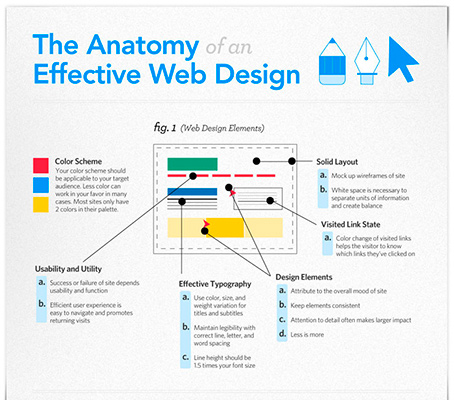The Development Of Internet Site Design: From Past To Present
The Development Of Internet Site Design: From Past To Present
Blog Article
Authored By-Johansen Vangsgaard
In the past, internet sites were basic and focused on info. Navigation was direct, and design was for desktop computers. Now, user experience is key. Information guides designs for simple navigation. Receptive layouts match different gadgets. Today, dark mode reduces strain, and minimal food selections boost navigating. Interactive features engage users, and bold visuals attract attention. AI integration improves engagement. See exactly how design has actually evolved to boost your on-line journey.
Early Days of Website Design
In the very early days of web design, simpleness reigned supreme. Web sites were basic, with limited shades, font styles, and layouts. The focus was on offering details rather than fancy visuals. Customers accessed the net via slow-moving dial-up links, so rate and performance were crucial.
Navigation food selections were straightforward, usually located at the top or side of the page. Websites were designed for home computer, as mobile browsing had not been yet common. Content was king, and designers focused on simple readability over complex design elements.
HTML was the key coding language utilized, and developers had to function within its constraints. Computer animations and interactive attributes were very little contrasted to today's standards. Websites were static, with little vibrant web content or personalized user experiences.
Rise of User-Focused Layout
With the evolution of internet site style, a shift towards user-focused layout principles has actually come to be increasingly famous. Today, creating web sites that prioritize customer experience is vital for involving visitors and achieving service goals. User-focused design involves recognizing the needs, choices, and behaviors of your target market to tailor the web site's format, web content, and features accordingly.
Developers now carry out extensive study, such as customer studies and functionality testing, to gather understandings and feedback directly from individuals. This data-driven technique helps in producing intuitive navigation, clear calls-to-action, and visually enticing user interfaces that resonate with site visitors. By putting the user at the center of the style process, internet sites can provide an extra personalized and delightful experience.
Responsive style has actually likewise emerged as a key element of user-focused design, making sure that sites are enhanced for different gadgets and display sizes. This versatility enhances availability and functionality, accommodating the diverse ways users connect with internet sites today. Fundamentally, the increase of user-focused layout signifies a change towards creating digital experiences that prioritize the demands and expectations of the end customer.
Modern Trends in Web Design
Check out the most recent patterns shaping website design today. One prominent fad is dark mode design, offering a smooth and contemporary look while decreasing eye stress in low-light atmospheres. An additional essential trend is minimal navigation, simplifying menus and improving individual experience by focusing on essential elements. Incorporating micro-interactions, such as animated buttons or scrolling results, can develop an extra appealing and interactive web site. Responsive layout stays crucial, making sure seamless customer experiences throughout different devices. Additionally, making use of bold typography and unbalanced layouts can include visual rate of interest and draw attention to particular content.
Incorporating AI modern technology, like chatbots for consumer assistance or individualized recommendations, boosts user involvement and streamlines processes. Ease of access has additionally end up being a significant trend, with developers prioritizing inclusive layout methods to accommodate diverse user demands. Accepting mouse click the next document by enhancing site performance for rate and effectiveness is one more arising trend in web design. Collaborating with individual comments and data analytics to repeat and improve design continually is necessary for staying relevant in the ever-evolving digital landscape. By accepting these contemporary trends, you can produce a visually enticing, straightforward web site that resonates with your target market.
Final thought
As you review the advancement of site layout from the early days to currently, you can see exactly how user-focused style has become the driving pressure behind modern-day fads.
Embrace simply click the following web site of adjustment and adjustment in website design, always maintaining the individual experience at the forefront.
Keep existing with the current fads and modern technologies, and never stop developing your method to develop visually magnificent and easy to use internet sites.
Progress, adjust, and produce - the future of website design remains in your hands.
